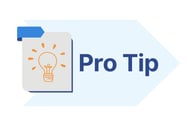The Role of Gamification in E-learning: Its Impact on Success
Gamification in e-learning is quickly becoming an important facet of the education industry and is expected to have a market size of $25.7 billion by...
4 min read
Alle Reid : Nov 13, 2025 12:50:00 PM

Your association is sitting on a goldmine. Think about it: the brilliant keynotes from your annual conference, the insightful data from your latest research paper, the expert-led webinars that generated so much buzz. This content is your most valuable asset. So why, for so many of us, does it end up in a digital 'graveyard'—a folder on a server, a link on a past-events page, slowly losing its relevance?
The challenge isn't a lack of expertise; it's a lack of the right structure. A 45-minute video and a downloadable PDF are not a course, but they are the perfect raw materials for one. In this guide, we’ll walk you through transforming that dormant content into a structured, engaging, and revenue-generating e-learning program that will serve your members for years to come.
As leaders and experts, the temptation is to share your entire wealth of information. But without a clear framework, you risk overwhelming your members rather than empowering them. The key to turning a deep content archive into a valuable learning asset isn't just the information itself—it's the structure.
Effective structure always starts with one question: "What should the learner be able to do after this course?" Your answer forms the learning objectives that will guide every decision you make.

Need help organising your content? Meet with us to get our content development template.
A great course isn't just a document; it's an experience. So what's the secret to creating one that truly works? The most powerful and effective strategy is to design based on three key factors: the content you're teaching, the context in which your members are learning, and the best modality for the job.
Using a variety of formats based on these factors is what makes your content clearer, more engaging, and more accessible for everyone. The key is to consider your audience—their capabilities, limitations, and their level of digital literacy.
Here are the key ingredients for a well-designed course:
Start with clear, well-structured text. Break it up with ample white space and headings, then enhance it with meaningful images, graphics, or charts. This clean, uncluttered approach isn't just modern design; it's crucial for making content easier for everyone to navigate and comprehend. Short videos are also perfect for demonstrating concepts in action. A clear visual presentation makes your course inviting and easy to comprehend.

Use the stock photo option in our course editor to add visual interest in seconds!
To strengthen comprehension and retention, let them hear it. An audio narration can add context and emphasis that text alone can't provide. It also serves as a vital accessibility feature, ensuring everyone has the opportunity to engage with the core concepts of your course.

Find out how to generate great audio in our next article on third-party tools.
Give your learners opportunities to actively engage with the material. Simple interactive elements like quizzes, reflection prompts, or short scenarios help them process and apply the information. This isn't just about keeping them busy; it's about helping them confirm their understanding and build confidence as they progress.

See our next article on third-party tools to learn how to add interactivity to your courses.
With your core content ready, the next step is to assemble it into a cohesive learning experience. Using a consistent module template is the key to both efficiency and engagement, streamlining the build process for your team while creating an intuitive journey for your members.
Think of each module not as a document, but as a guided experience. We recommend this proven five-part structure to create a clear and logical pathway to mastery:
Your content has potential. Structure unlocks it. By breaking down your expertise into bite-sized, digestible modules and engaging members through a variety of formats, you create more than a course—you build a lasting asset for your association.
This is how you increase member value, create new revenue streams, and secure your place as the leading educational voice in your industry. The strategy is clear, and the tools are within reach.
Don't let your expertise gather dust for another day. Take the next step. Book a demo with us today, and let's start building your online learning program together.

Gamification in e-learning is quickly becoming an important facet of the education industry and is expected to have a market size of $25.7 billion by...

With a solid foundation laid in the Analysis and Planning phase, the next step in our roadmap is to bring your educational vision to life through...

So you’re ready to jump into teaching online? Whether it’s for the first time or you’re looking to shake up your system, the first, and probably the...